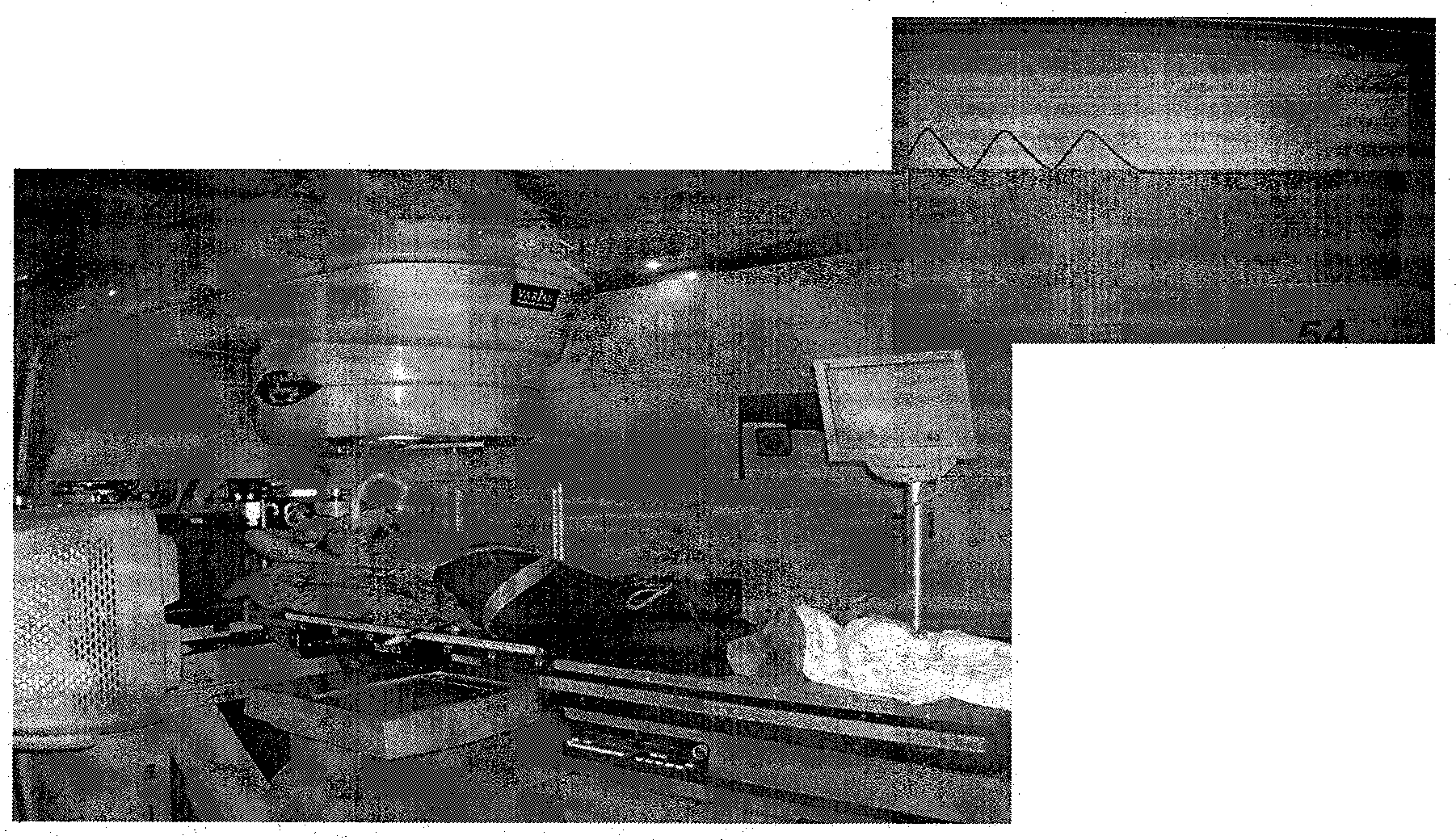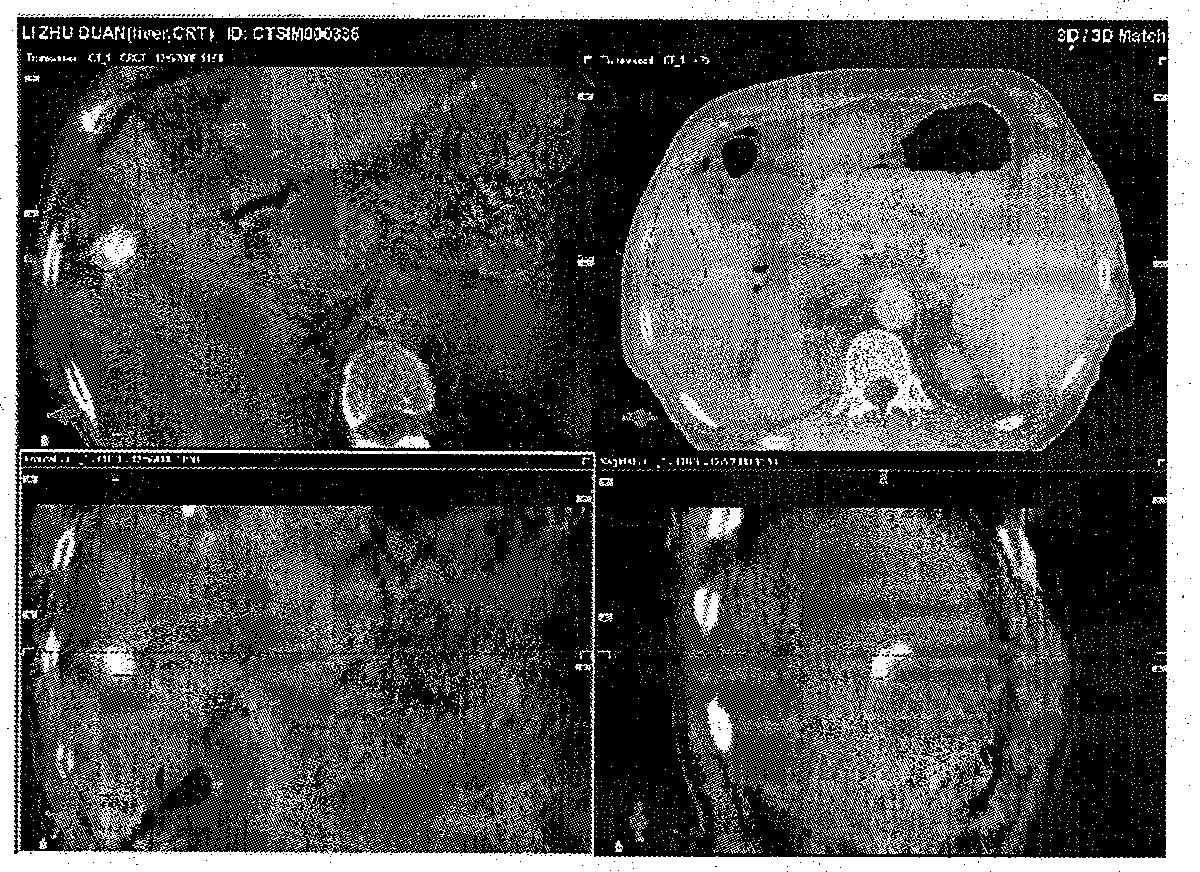United autonomous respiration control on-line alignment technique using iodized oil image to guide image-guided radiotherapy
A spontaneous breathing, image-guided technology, applied in radiation therapy, treatment, etc., can solve the problems of unclear display, inability to overcome scattering, existence of artifacts, etc., to achieve good clinical efficacy, improve treatment effect, and reduce damage.
- Summary
- Abstract
- Description
- Claims
- Application Information
AI Technical Summary
Problems solved by technology
Method used
Image
Examples
Embodiment
[0048] From image 3 It can be seen from the figure that the upper right is the planned CT image, and the remaining three are the horizontal, coronal, and sagittal CBCT images. Although the CBCT images are not clear and have artifacts, the lipiodol images on the CBCT images are clearly displayed. Feasibility of lipiodol image as registration reference:
[0049] (1) Lipiodol retention time:
[0050] Lipiodol cannot be cleared due to the lack of lymphatic system in liver tumor tissue and poor clearance function. Literature research shows that lipiodol selectively accumulates and persists in the post-tumor necrosis area, which generally persists for 2-6 months or even longer; Although the oil can selectively accumulate, the site where it gradually disappears is the survival area behind the tumor thrombus, which usually disappears in 1-2 months, and a small amount of lipiodol usually disappears in 2 weeks in the non-cancerous liver parenchyma.
[0051] The technical research gro...
PUM
 Login to View More
Login to View More Abstract
Description
Claims
Application Information
 Login to View More
Login to View More - R&D
- Intellectual Property
- Life Sciences
- Materials
- Tech Scout
- Unparalleled Data Quality
- Higher Quality Content
- 60% Fewer Hallucinations
Browse by: Latest US Patents, China's latest patents, Technical Efficacy Thesaurus, Application Domain, Technology Topic, Popular Technical Reports.
© 2025 PatSnap. All rights reserved.Legal|Privacy policy|Modern Slavery Act Transparency Statement|Sitemap|About US| Contact US: help@patsnap.com



